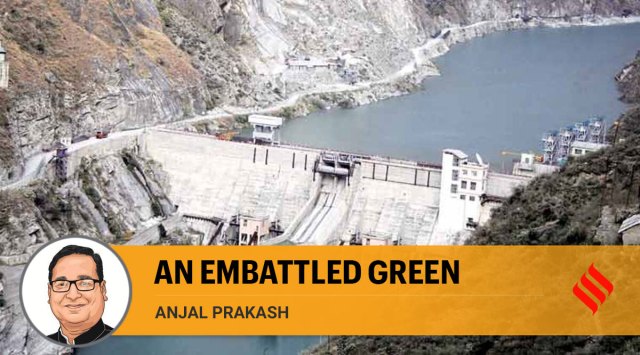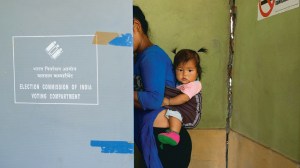- India
- International
On Joshimath: Hydropower projects in the Himalaya should be reconsidered given recent crisis
The Himalaya's fragile ecosystem is already threatened by deforestation, overgrazing, and construction activities that harm the environment and local communities that depend on it.
 The Himalaya are a major water source for much of South Asia. (Representational/File)
The Himalaya are a major water source for much of South Asia. (Representational/File) The crisis unfolding in Joshimath for over a month has led to conversations on the relevance of hydropower in the Himalayan region. Two years ago, a glacier burst led to question marks over the Rishiganga hydroelectric project in Uttarakhand.
Hydropower is often considered green energy because it generates electricity from the natural flow of water without releasing any emissions or pollutants. It also does not rely on fossil fuels.
However, the environmental impact of hydropower can vary depending on projects and the ways in which they are implemented. Large-scale hydroelectric dams impact local ecosystems and communities — they displace people and result in loss of habitat for fish and other wildlife. The building and maintenance of large hydroelectric dams can also have a significant environmental impact.
The Himalaya are a major water source for much of South Asia. Most countries in the region, including India, China, Nepal, Bhutan, and Pakistan, have built or are planning to build hydropower projects in the Himalaya. In India, the government has identified hydropower as a key renewable energy source. Many hydropower projects are under construction or in the planning stages in the Indian Himalaya, including the Subansiri Lower Hydroelectric Project in Arunachal Pradesh and the Teesta Low Dam Hydroelectric Project in Sikkim. Nepal has also identified hydropower as a major source of energy. It has many hydropower projects in the planning and development stages, including the Arun III Hydroelectric Project and the West Seti Hydroelectric Project.
In Bhutan, hydropower is the main source of revenue, and the government has set a target to export surplus electricity to India. The country has built several hydropower projects, including the Chukha Hydropower Project and the Tala Hydropower Project.

The development of hydropower projects in the Himalayas has been controversial. Besides environmental impacts — in Joshimath and other parts of Uttarakhand, for example — there are also concerns about the potential conflicts over water resources in the region. The Himalaya is a fragile ecosystem and home to a diverse range of flora and fauna. It is already threatened by deforestation, overgrazing, and construction activities that harm the environment and local communities that depend on it.
The construction of dams can disrupt the flow of rivers, leading to changes in water temperature and chemistry. It can also cause erosion, landslides, and sedimentation which can have a negative impact on the local environment. Dams also disrupt the migration patterns of fish and other aquatic species and impact the local wildlife, particularly if the dam’s construction leads to habitat loss. Large-scale hydroelectric dams displace local communities, affecting their livelihoods and cultural heritage and impacting the overall well-being of the local population.
What are the alternatives to hydropower? Micro hydro is a small-scale hydroelectric power generation system that typically generates up to 100 kilowatts (kW) of electricity. These systems use the energy of falling water to turn a turbine, which, in turn, generates electricity. They can be used for various applications, including powering homes, businesses, and small communities.
Micro hydro systems are typically less expensive to build and maintain than large hydroelectric dams and have a smaller environmental footprint. They can be located even in inaccessible areas where it is difficult to transmit electricity from larger power stations, and they can provide a reliable source of energy to communities that are not connected to the grid.
Micro hydro systems can be classified into two main types – run-of-river and storage systems. Run-of-river systems use the natural flow of water in a stream or river to generate electricity. In contrast, storage systems use a reservoir to store water and release it as needed to generate electricity.
Micro hydro systems can be tailored to minimise the ecosystem’s negative impact and provide sustainable energy solutions. However, it’s important to note that even micro-hydropower projects can have some impact on the environment and local communities. A detailed assessment should be carried out to evaluate the potential impact before proceeding with the project.
The writer is the Research Director at the Bharti Institute of Public Policy at ISB. He contributes to the IPCC reports and has led research on glaciated rivers in Hindu-Kush Himalayan Region in the past
EXPRESS OPINION
More Explained
Apr 20: Latest News
- 01
- 02
- 03
- 04
- 05









































